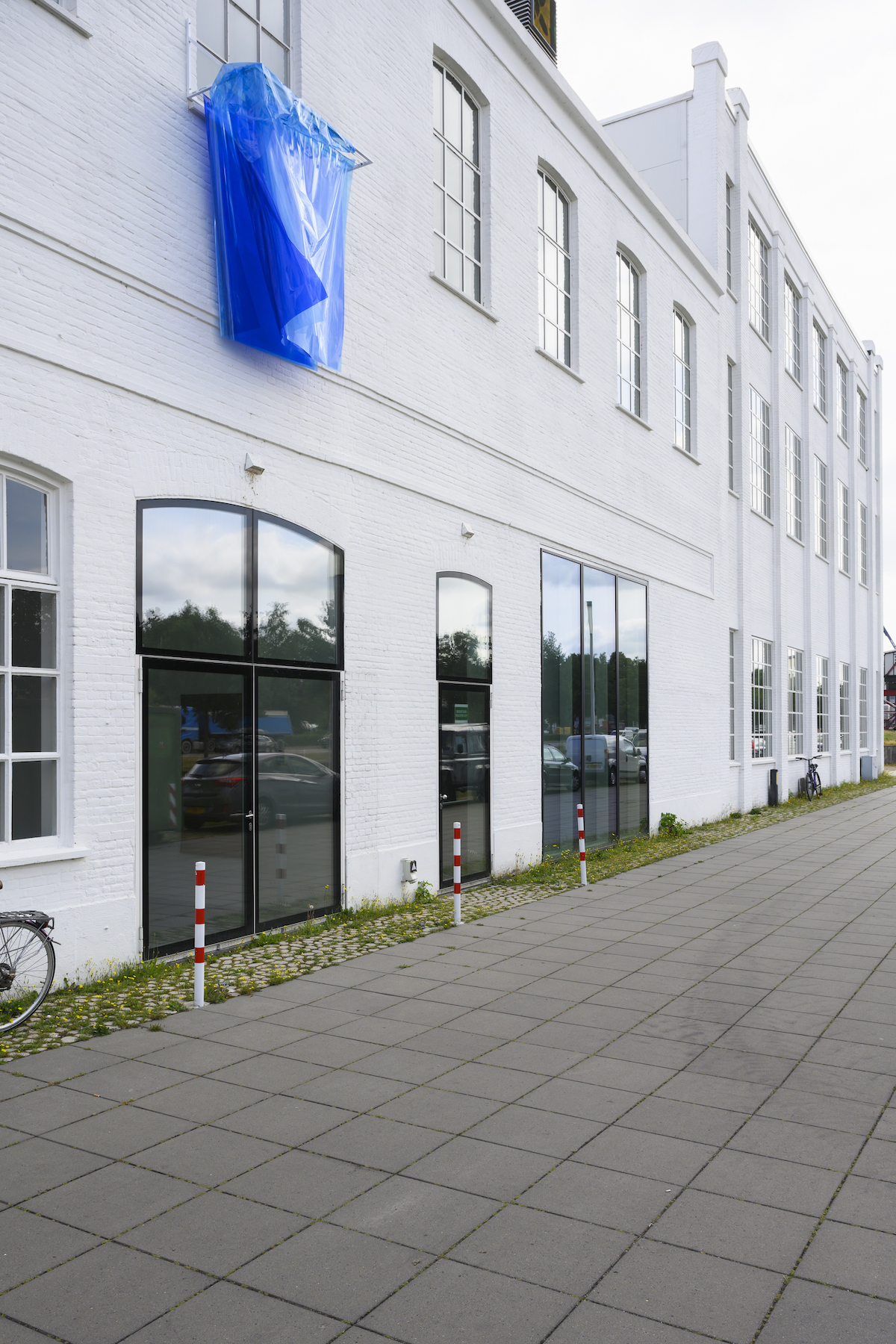
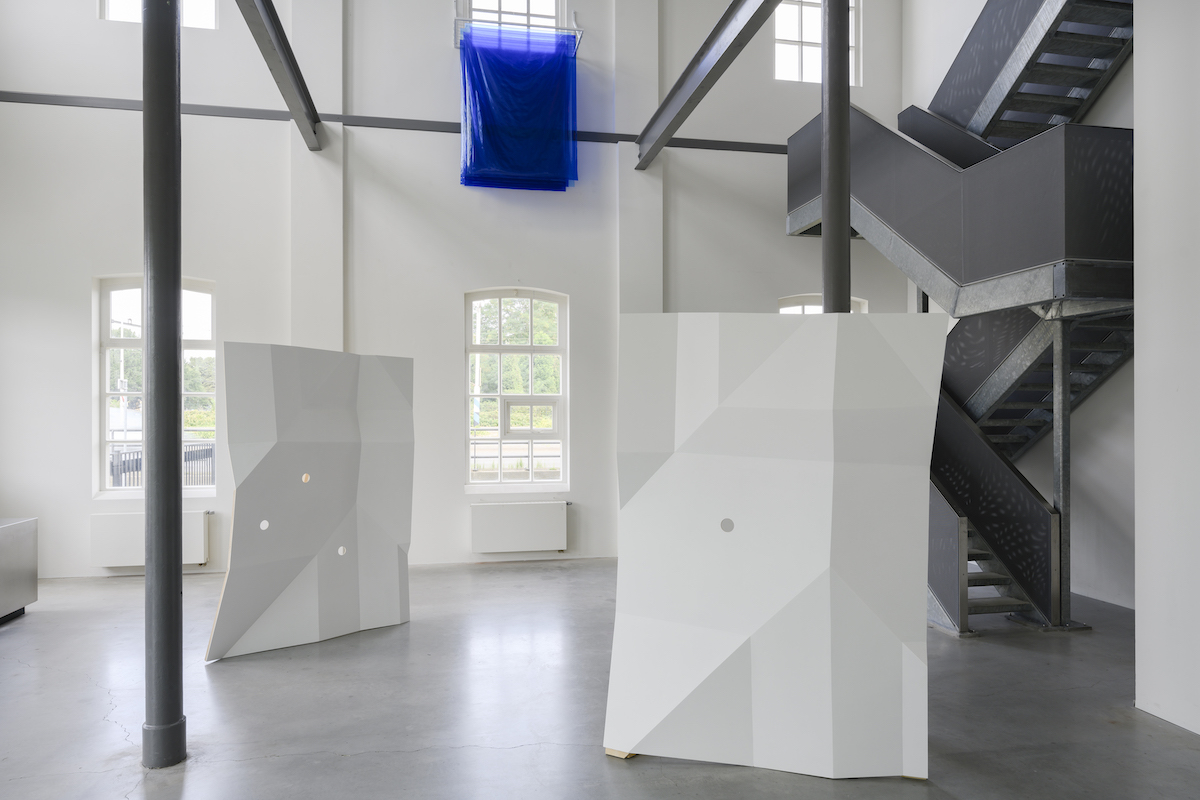
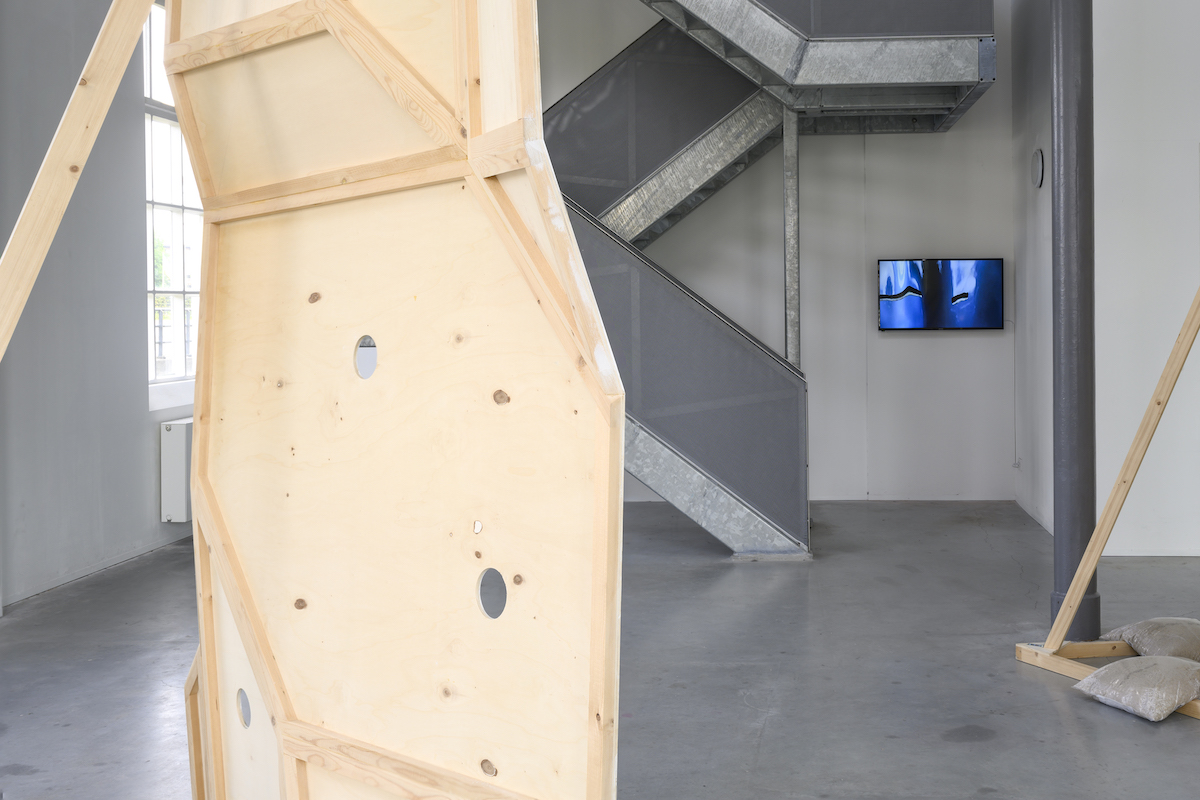
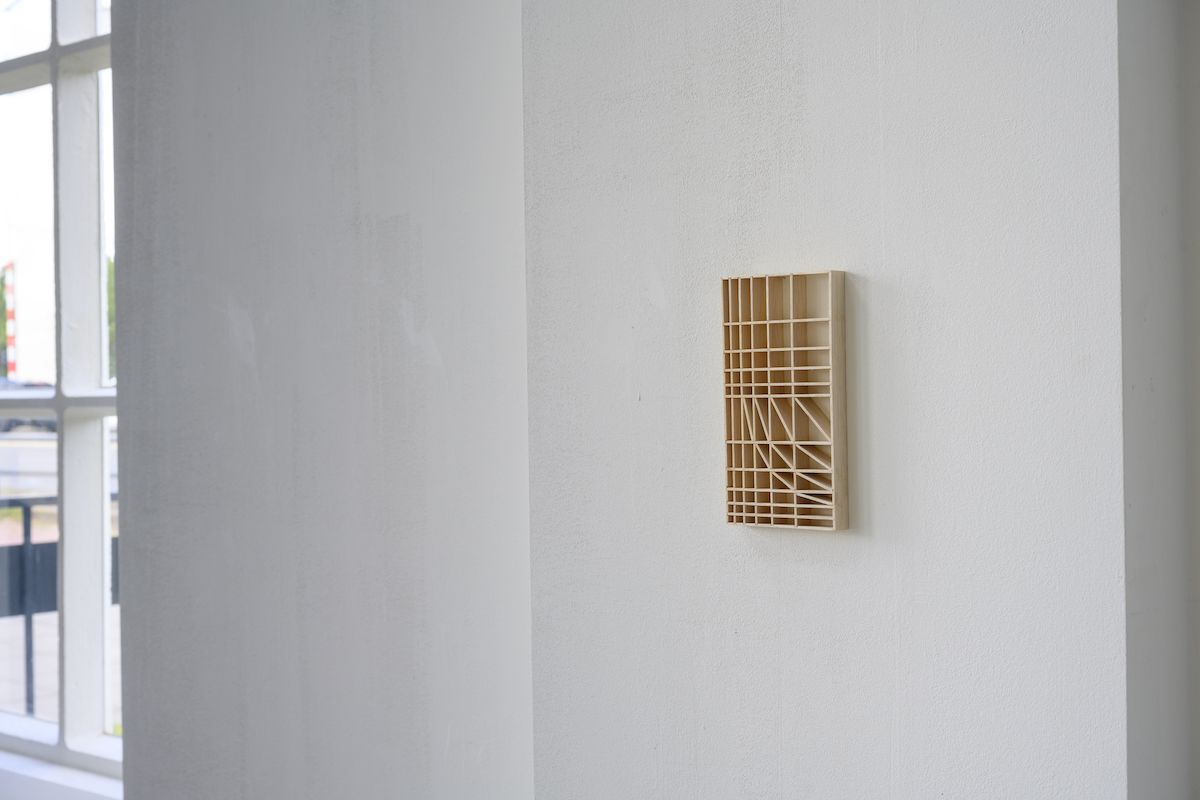
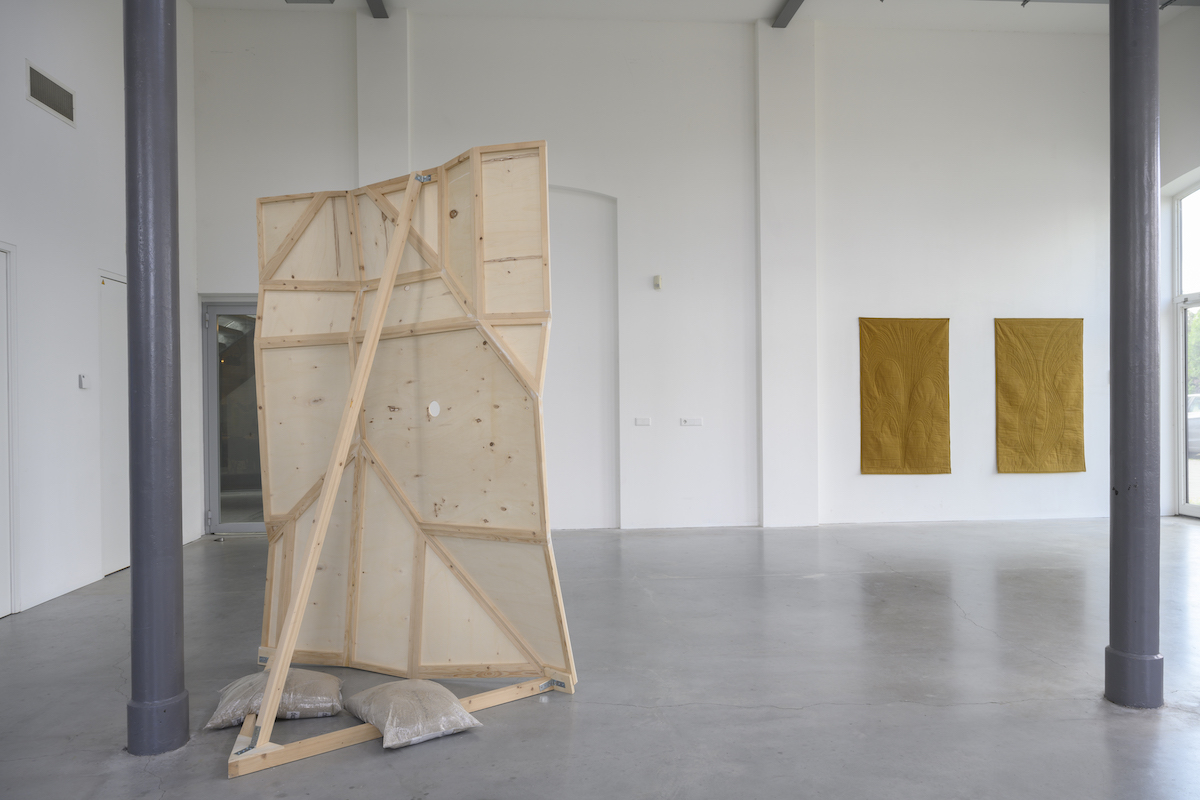
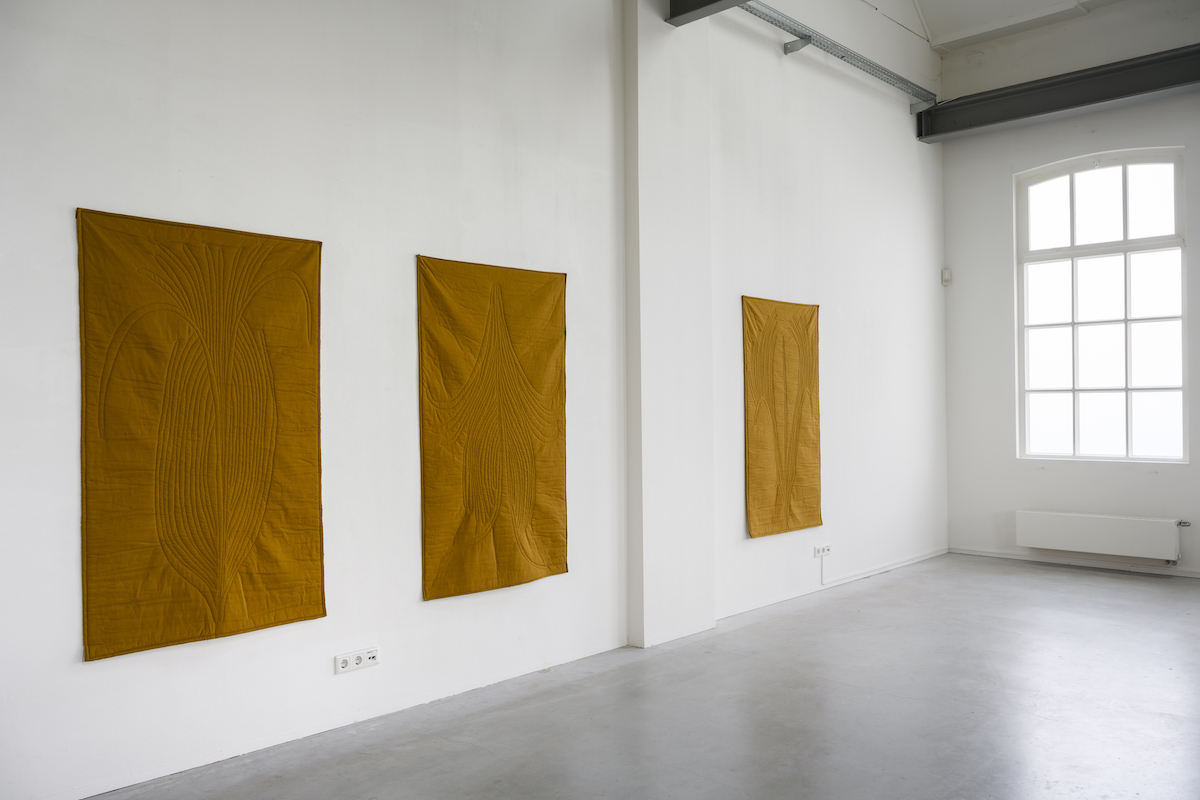
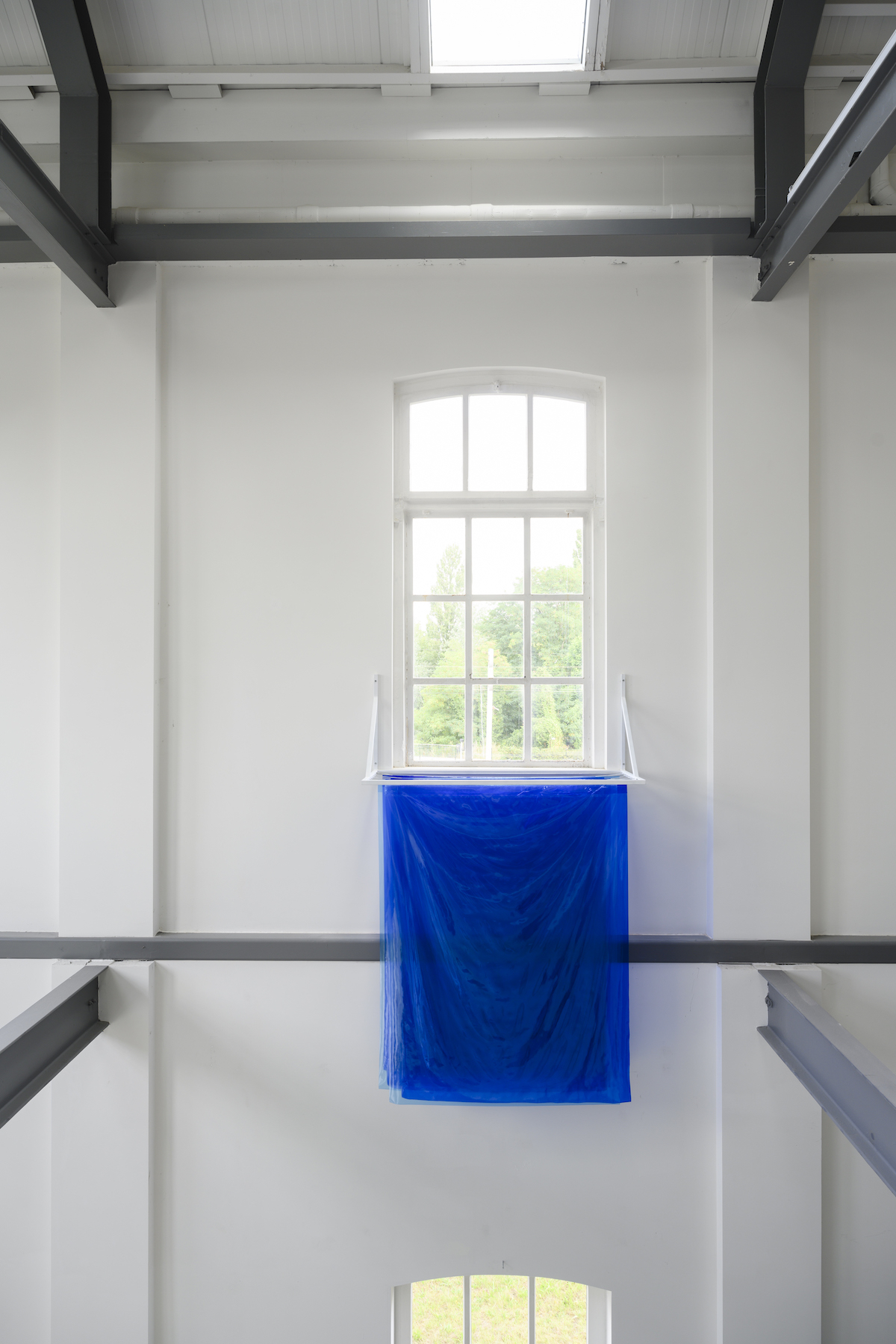
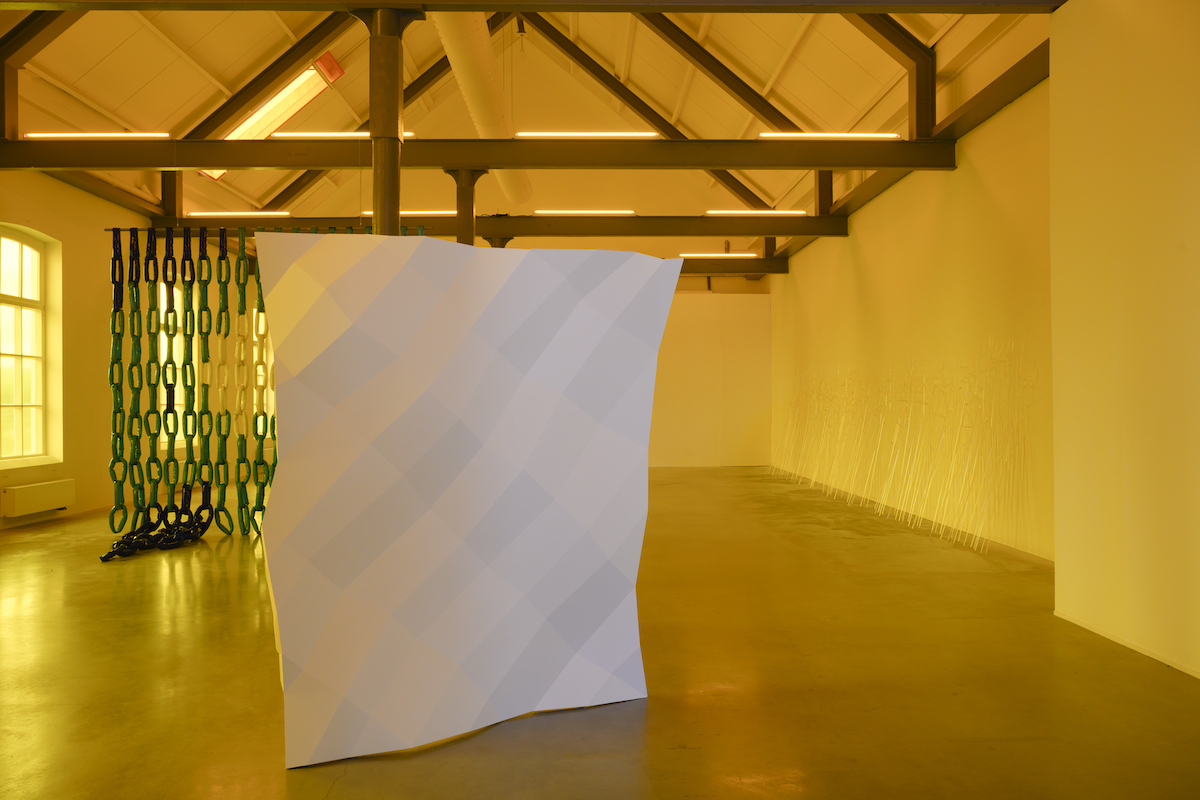
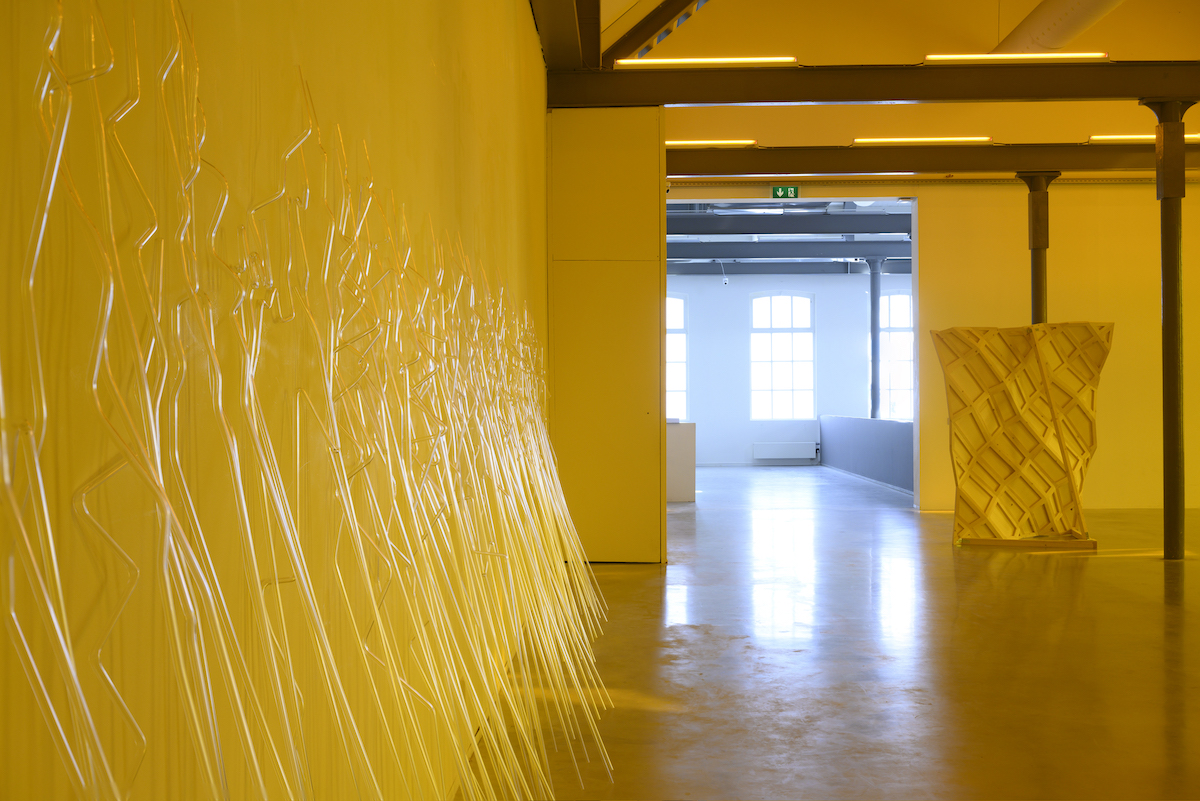
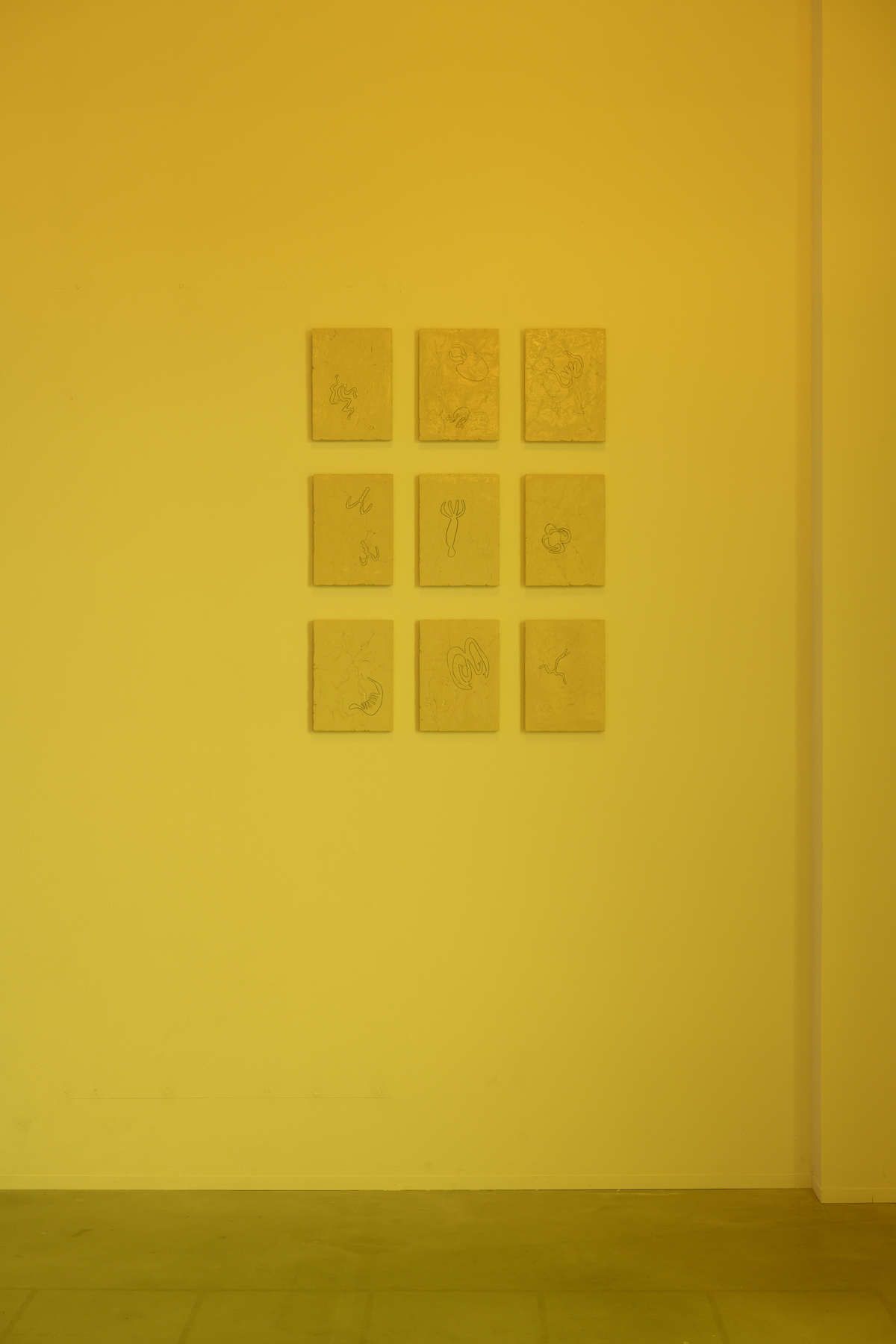
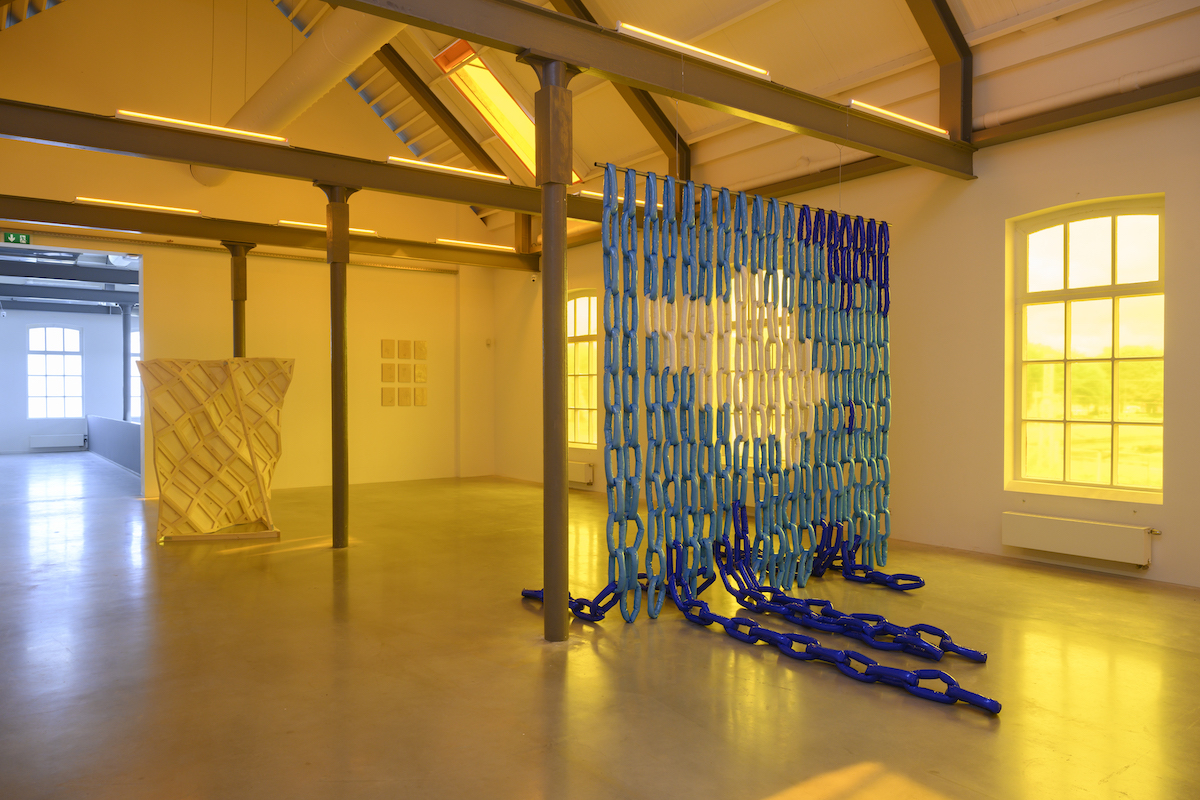
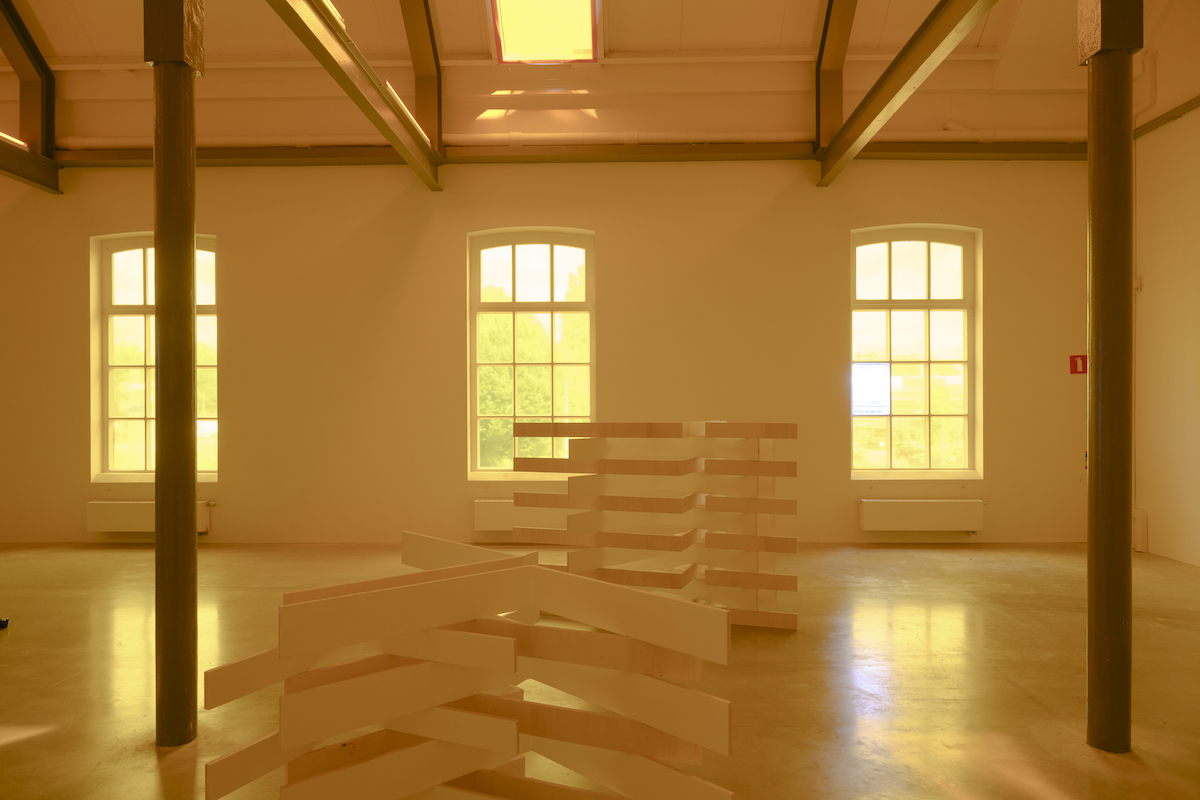
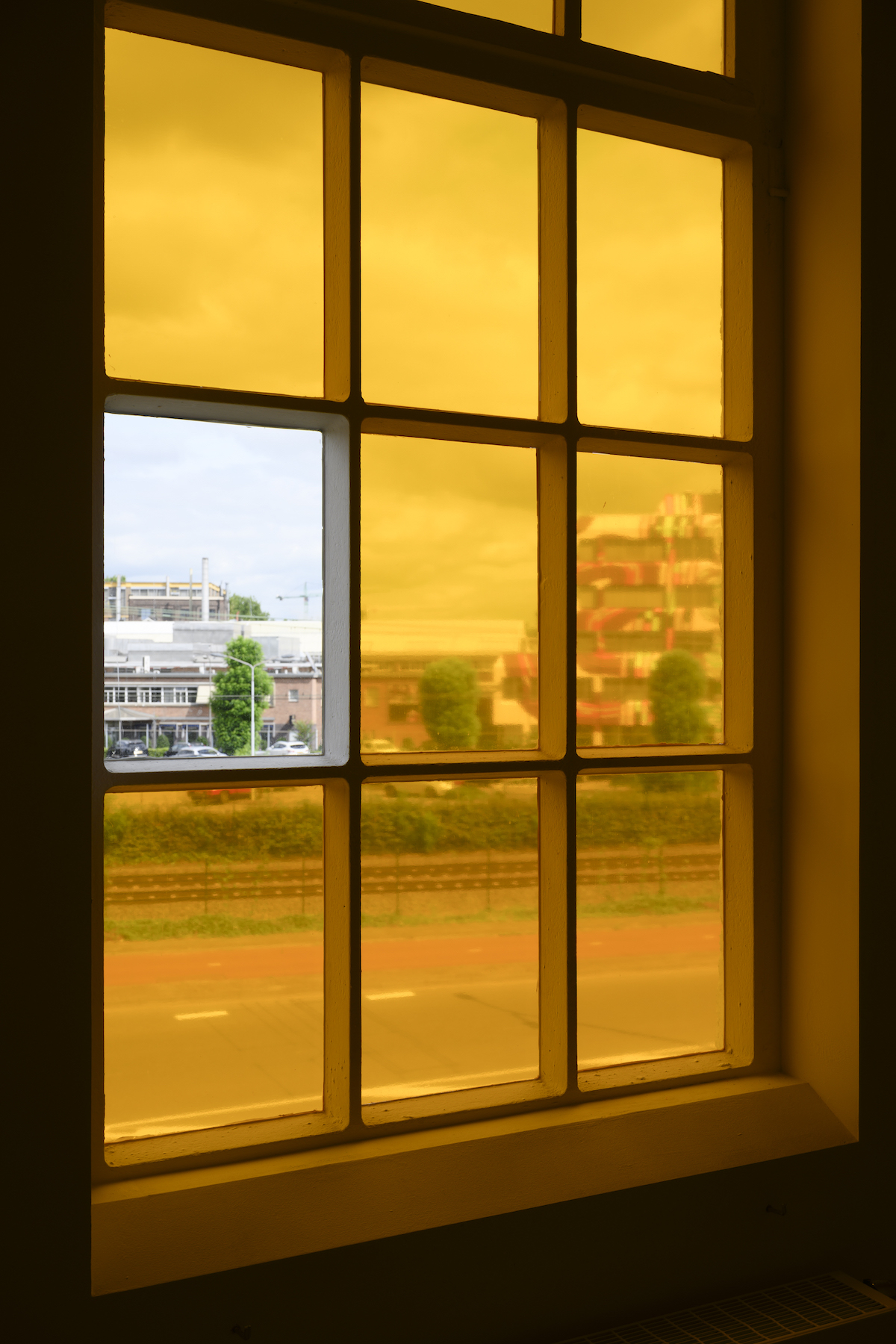
De Cacaofabriek, Helmond (NL)
10 July – 21 August 2022
A three-dimensional object with one color, can contain hundreds of shades of that color. In geometric forms the multiplicity of the color will be clearly and orderly visible over the loose surfaces, while in organic forms the tones subtly run into each other.
A shiny object does not only reflect the light but also reflects our gaze back; the space around the object is also visible in the reflection.
Matte objects can be viewed very well, with your eyes you can precisely scan the object. Matte materials are very effective for complicated shapes, because the viewer is not distracted by reflections. The light falling on plaster, fabric or unglazed ceramics first of all makes the shape visible.
Super-matte objects look flat and unnatural. Matte black even absorbs all the light and makes it difficult to see details in a form.
Semi-translucent materials such as white casting wax are also matte, but work in a different way. The light seems to penetrate halfway in and illuminate the object from there. You can’t really focus on the surface with your eyes.
A sculpture made of colorless transparent material shows us the inner core, but the outer border is less accentuated. It flows into the surroundings, as it were. Shadows are less diffuse than the object itself.
A colored transparent form frames part of the space and gives it a different atmosphere. Multiple layers in a row will block more and more light, making the image increasingly cloudy.
Selina Baumann prefers to work with ceramics. Her sculptures fascinate through their extensive repertoire of forms, which could be from the past or from the future. They may be the remains of an advanced civilization or objects left behind on earth by an extraterrestrial civilization. For the exhibition, she has made drawings on ceramics and new works made of fabric.
Romina Farkas is concerned with the discovery and representation of subjective and cultural perceptions of nature. In the exhibition, she shows two large-scale installations that explore the representation and effect of the sky. Through the use of materials, she makes cross-references to the interplay between human developments, the emergence and transformation of natural phenomena, and the perception thereof.
Anneke Kleimann’s works materialize non-visual phenomena. An important theme is her fascination with time. She confronts scientific findings with her own observations and with her work provides a different access to abstract facts. For this exhibition she investigates the waveform of light, from which a monumental wall installation emerges.
Margot Zweers investigates spatial structures. Between subjective perception and reality she searches for ambiguous, poetic situations. The exhibition includes ‚Flat Objects‘, geometric sculptures which show the multiplicity of a single color. In addition she shows a new work series, in which fragments of spaces literally run through one another and thus become semi-transparent.
Photos: Peter Cox